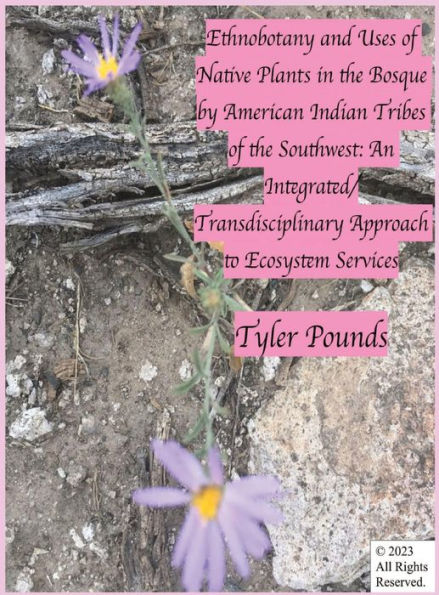Table of Contents
Table of Contents
Copyright Notice: v
Dedication(s): vi-vii
Forward and Acknowledgements: vii
Traditional Ecological Knowledge: 1-2
Applications of TEK through Methodological Practices: 2-3
Participatory Action-Based Research Approach: 3-4
Community-Based Service Learning: 4-5
The Importance of Plants in Tangible and Intangible Cultural Heritage, Heritage Resources, and Natural Resource Management: 6-8
TEK Forms, the BIOTEK Database Information Management System, the TRIBAL-RAD TEK System, and the GOV-RAD TEK System: 8-26
BIOTEK Database Information Management System Use in University/Researcher Settings: 26
Ecological Anthropology Becoming the Standard for Documenting "Uses of Biodiversity" (An Integrative Approach): 27-30
Solanum elaeagnifolium Cav. "Silverleaf Nightshade" (Ethnobotanical uses among the Navajo, Zuni, Cochiti-Pueblo, Isleta-Pueblo, Keresan-Pueblo, Hopi, Pima, Apache-White Mountain, and Spanish-American tribes): 31-39
Populus deltoides wislizenii "Rio Grande Cottonwood" (Ethnobotanical uses among the Acoma-Pueblo, Apache-Chiricahua and Mescalero, Apache-White Mountain, Isleta-Pueblo, Jemez-Pueblo, Keres Western-Pueblo, Laguna-Pueblo, Navajo, Pima, Tewa-Pueblo, and Zuni tribes): 40-51
Helianthus petiolaris "Prairie Sunflower" (Ethnobotanical uses among the Havasupai, Hopi, and Navajo tribes): 52-57
Chloracantha spinosa "Mexican Devil-Weed" (Ethnobotanical uses among the Mojave and Navajo tribes): 58-59
Anemopsis californica "Yerba Mansa" (Ethnobotanical uses among the Kamia- Kumeyaay, Keres Western-Pueblo, Paiute, Papago, and Pima tribes): 60-68
Prosopis pubescens "Screwbean Mesquite" (Ethnobotanical uses among the Apache-Chiricahua and Mescalero, Hualapai, Isleta-Pueblo, Kamia-Kumeyaay, Mojave, Paiute, Pima, Pima-Gila River, and Tewa-Pueblo tribes): 69-81
Cirsium neomexicanum "New Mexico Thistle" (Ethnobotanical uses among the Navajo, Navajo-Ramah, and Yavapai tribes): 82-85
Forestiera pubescens "New Mexico Olive/Desert Olive/Stretchberry" (Ethnobotanical uses among the Apache-Chiricahua and Mescalero, Hopi, Isleta- Pueblo, Jemez-Pueblo, Navajo, and Navajo-Ramah tribes): 86-91
Psorothamnus scoparius "Broom Dalea" (Ethnobotanical uses among the Keres Pueblo-Western tribe): 92-94
Vitis arizonica "Arizona Grape/Canyon Grape" (Ethnobotanical uses among the Apache-Chiricahua and Mescalero, Apache-Western (Western Apaches), Havasupai, Isleta-Pueblo, Jemez-Pueblo, and Navajo tribes): 95-100
Panicum capillare "Witchgrass" (Ethnobotanical uses among the Hopi, Keres Pueblo-Western, Navajo, Navajo-Ramah, and Tewa-Pueblo tribes): 101-104
Phragmites australis "Common Reed" (Ethnobotanical uses among the Apache- White Mountain, Cocopah, and Havasupai tribes): 105-108
Data Analysis of Documented Botanical Uses: 108-118
Integrating Bio-Cultural Diversity into Wildlife and Natural Heritage Conservation (Ecosystem Services): 119-123
Bio-Cultural Environmental Use Theory: 123-126
Human-Wildlife Resource Modeling (Predictive Modeling for Human-Wildlife Resource Use): 126-132
Special Thanks: 132-135
Afterword and Acknowledgements: 135-138
About the Author/Illustrator/Front & Back Cover Artist: 139-140
About the Editor: 141
Front and Back Cover Artwork (Photographs): 141-142
Sources Cited: 142-150



